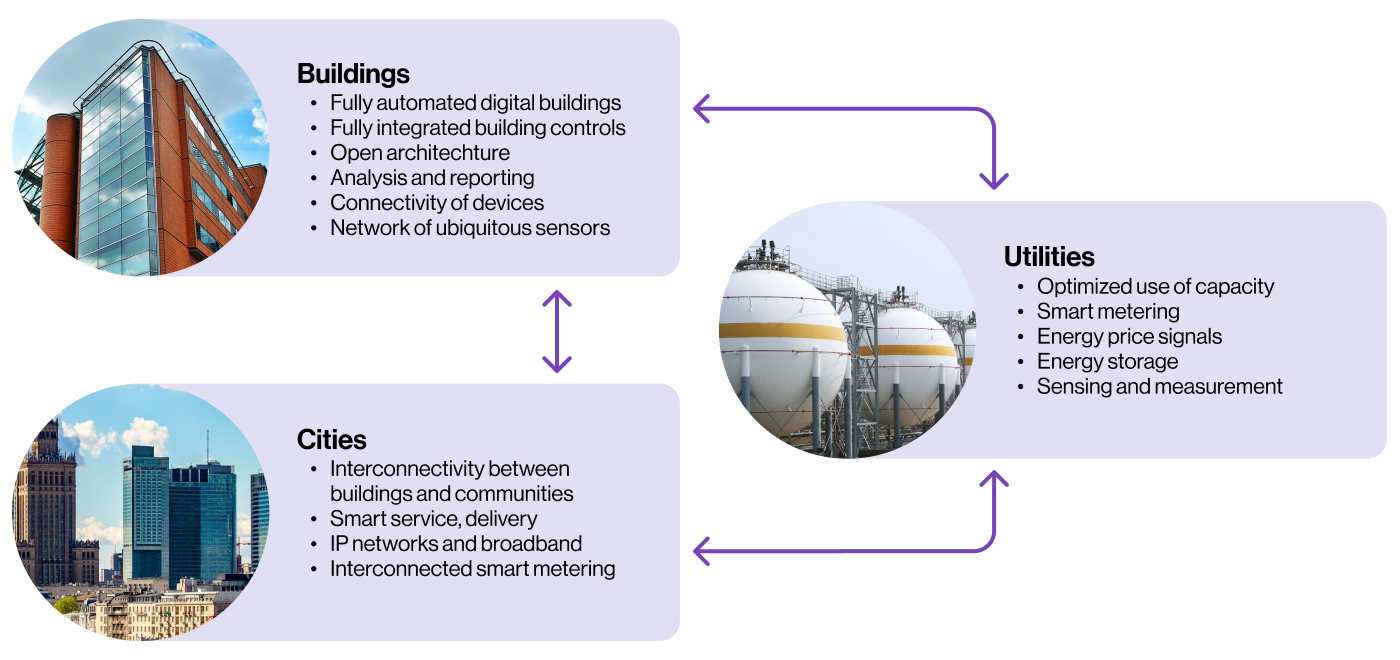In short, the Internet of Things (IoT) is the digital, connected universe of smart devices. These devices are embedded with internet connectivity and consist of hardware, such as sensors, that can communicate with people, the internet, and each other.
"The cloud," big data, and mobile technology enable these physical devices to collect and share data without human intervention. In our hyper-connected world, this data is used to record, monitor, and adjust every device interaction. The physical world meets the digital world – and they work together.
Examples of IoT
Number of IoT connected devices
Most of us are well familiar with the technology. Perhaps the best example is your "smart home," where you can control light, sound, security, and heating through your mobile.
Various businesses already use this technology, such as automotive workshops where your car can send data about mileage and error messages before your appointment. Or in the automation industry, where sensors in a factory can collect data on pressure, air, humidity, and equipment in use – and optimize the interaction between different units.
How can IoT create smart buildings?
Buildings are a large expense for most businesses, so it's no surprise that owners and managers are constantly looking for new ways to make them more efficient.
IoT technology is also becoming more common in residential properties (housing associations and condominiums), although there is still huge untapped potential in connecting these buildings to the cloud.

Within building management, IoT makes it possible to manage processes and productivity so that you can take the proper measures to increase energy efficiency or reduce emissions. Not to forget, IoT helps improve the indoor climate by keeping a more stable indoor temperature. Which also tends to decrease complaints related to indoor temperature.
Integrating IoT into existing building systems gives property owners, technicians, and energy companies greater opportunity to monitor and adjust consumption, seamlessly and immediately.
About IoT devices
When you connect the IoT devices to an AI-based IoT platform, such as Edge, this platform can analyze the data from sensors and automatically visualize and optimize energy use. With real-time analytics about the building structure, external impact, and better data material, the result is a building where every component can work much better. This is often reflected in lower energy usage, better indoor climate, and less waste.
Independent and flexible IoT platforms create a seamless interaction between internal and external factors – with little helpers who work around the clock to create smart buildings.
Benefits of (extra) smart buildings
What once forced technicians to make expensive on-site visits can now be addressed digitally, often before it becomes an issue. While most buildings today have some smartness, the difference lies in the flexibility of different solutions. While some are more open and independent, others are more locked.
Using algorithms, our solutions will continuously monitor your building and react when something isn't working correctly. This can be both physical faults and when something can be tweaked to make it more efficient. You detect non-conformances faster and don't have to spend time on follow-up and analysis.
More benefits:
- IoT provides a faster basis for decision-making, with weight in data so that you make the right choices.
- Make it easier to identify bottlenecks that reduce efficiency so you can improve processes.
- Reduces downtime due to unscheduled maintenance or equipment failure.
Make sure your building management systems perform its very best